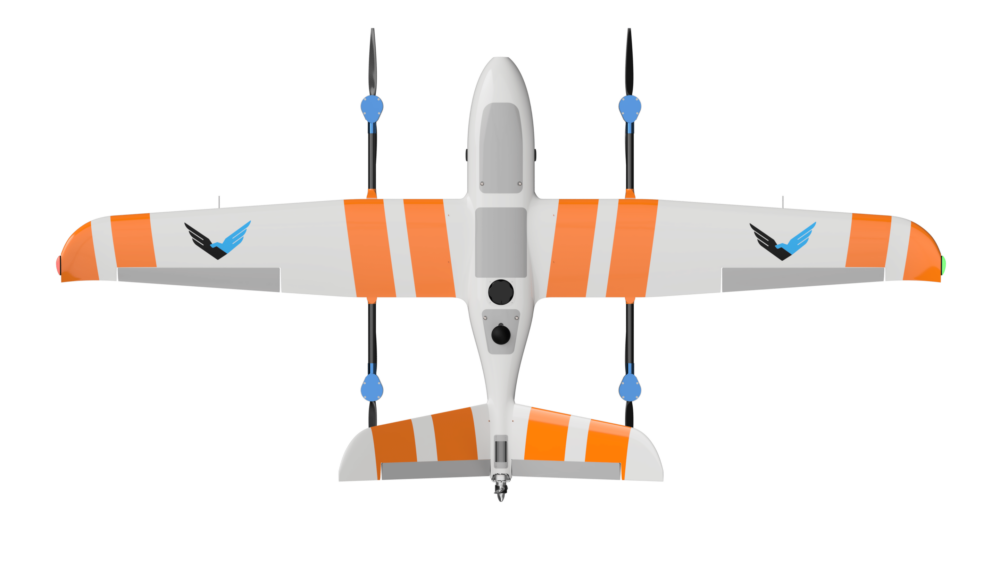The drone industry is poised for significant changes in 2025. A new U.S. administration, new leadership at the Federal Aviation Administration (FAA), and shifting global conflicts will influence regulations, supply chains, and technological advancements. DRONELIFE asked industry thought leaders what they thought the coming months would bring, highlighting key trends in regulatory developments, AI-driven automation, national security, and evolving business models.
Regulatory Shifts and the Path to BVLOS
With the passage of the FAA Reauthorization Act of 2024, experts anticipate movement toward Beyond Visual Line of Sight (BVLOS) operations.
“Following on the FAA Reauthorization Act of 2024, in 2025 I’m looking to see increased pressure on a move towards BVLOS operations through rulemaking rather than waiver-based operations. The groundwork for that has been under development for a long time, it will be an exciting time when it comes to fruition, opening up room for the next disruptive technologies in the drone industry in the US.” – Sam Knight, Vice President of Product Management & Remote Pilot, Blue Marble Geographics.
BVLOS operations could transform commercial and public sector drone applications, unlocking new opportunities for autonomous systems and emergency response efforts.
AI and Automation: The Next Phase of Drone Capabilities
Experts predict that artificial intelligence (AI) and automation will play a critical role in 2025. AI-powered navigation and real-time data processing will reduce human intervention while improving efficiency across industries.
“AI at the edge will be essential for asset intelligence as BVLOS drone operations expand and data volumes grow. By enabling near real-time data processing, AI can quickly transform raw data into actionable insights. This will be key to keeping pace with the increasing demand for timely information.” – Trevor Perrott, CEO & Co-Founder at Censys Technologies.
The trend toward AI-driven autonomy will impact logistics, industrial inspection, and public safety, making drones an even more valuable tool in critical operations.
Security and Supply Chain Challenges
With rising geopolitical tensions, national security concerns around drone supply chains will remain at the forefront. The Countering CCP Drones bill, aimed at restricting Chinese-made drones and components, is expected to have wide-ranging effects on the industry.
“2025 is sure to be another dynamic year for the UAS/UAV industry. We expect to see the effects of the Countering CCP Drones bill extend beyond specific platforms like DJI, with even basic components becoming more restricted for the West as trade tensions increase and national security imperatives take center stage here in the US. Additionally, as other countries begin to show more effective UAS adoption, pressure on the DoD to reset their UAS strategy will mount, and we believe consensus will build around establishing an NDAA-compliant standard other than DIU’s Blue program.” – Peter Fuchs, Co-founder and CEO of Ascent AeroSystems.
The shift toward NDAA-compliant and domestically manufactured drones could reshape the competitive landscape, leading to increased investment in aircraft-grade, multi-mission platforms.
UTM, U-Space, and Global Airspace Integration
As urban air mobility and commercial drone operations expand, Unmanned Traffic Management (UTM) and U-Space frameworks will play a crucial role in integrating drones into shared airspace.
“In 2025, the drone industry will see increased uptake and significant progress toward commercial rollouts of certified UTM and U-space systems, enabling seamless integration of drones into shared airspace. Regulatory frameworks like EASA’s U-space will set global benchmarks, driving advancements in safety, automation, and interoperability.” – Amit Ganjoo, Anra Technologies.
These frameworks will set standards for safe and efficient drone operations, influencing global adoption and regulatory alignment.
The Role of Drones in Climate and Carbon Markets
Environmental applications for drones are expanding, particularly in monitoring carbon emissions and supporting sustainability initiatives.
“There is definitely a strong commitment from global agencies, governments, and corporations to ambitious net-zero frameworks, demand for carbon credits is growing at a fast pace, and I think Trump sees an opportunity so he will not block this trend. In parallel, UAV technology is rapidly gaining traction as a crucial tool for delivering precise, real-time data on emissions, environmental measurements, etc., ultimately strengthening the credibility and impact of carbon offset initiatives. The sheer scale of these collective commitments underscores a market environment primed for UAV companies to specialize in this field.” – Sukhee Cho, Vice President at Hojung Solutions.
As carbon credit markets evolve, drones will provide valuable data for environmental monitoring, compliance, and sustainability efforts.
The Future of Autonomous Drone Operations
“With the passing of the FAA Reauthorization Act last year, 2025 is poised to be a landmark year for the drone industry. Beyond Visual Line of Sight (BVLOS) will become a reality for both commercial and public operations, unlocking the next wave of innovation. This, coupled with expedited waiver processing, will accelerate opportunities in autonomous drone operations, drones as first responders (DFR), and other advancements.” – Brett Kanda, Flock Safety.
Kanda also predicts that enhanced obstacle-avoidance technology and AI-driven navigation will make drones indispensable for logistics, precision agriculture, industrial inspection, and public safety.
Data Security and Mapping
Data security will remain a critical concern for drone mapping and geographic information systems (GIS).
“In 2025, we can expect to see a heightened focus on data security in the mapping industry, driven by different factors such as increased cyber threats, regulatory compliance, and customer trust. By prioritizing data security, companies can ensure the confidentiality and integrity of their valuable mapping data. Keeping the processing and storage loop local will continue to be the most trusted means of maintaining security.” – Eric Andelin, Senior Workflow Specialist at SimActive.
With increasing reliance on drone-generated data, secure storage and processing will be essential for maintaining trust and regulatory compliance.
Public Perception and the Future of Drone Regulation
As drones become more common, public perception will shape policy and regulation.
“I predict a new public fascination with drones and drone technology, requiring the industry to vastly improve communication or face unprecedented levels of new regulations as science fiction and misunderstanding is more prevalent in the current public lexicon of UAS than actual science and objective reality. The UAS industry will face its first existential crisis.” – Dr. Will Austin, WarrenUAS.
Clear and effective communication about drone capabilities, safety, and benefits will be key to preventing restrictive policies and fostering public acceptance.
The Road Ahead
2025 promises to be a transformative year for the drone industry, driven by regulatory changes, technological advancements, and evolving global dynamics. From BVLOS rulemaking to AI-driven automation, national security concerns, and environmental monitoring, drones will continue to reshape industries and society. As the industry navigates these changes, companies will need to adapt quickly to stay ahead in an increasingly competitive landscape.
Want DRONELIFE news delivered to your inbox every weekday? Sign up here.
Read more:


Miriam McNabb is the Editor-in-Chief of DRONELIFE and CEO of JobForDrones, a professional drone services marketplace, and a fascinated observer of the emerging drone industry and the regulatory environment for drones. Miriam has penned over 3,000 articles focused on the commercial drone space and is an international speaker and recognized figure in the industry. Miriam has a degree from the University of Chicago and over 20 years of experience in high tech sales and marketing for new technologies.
For drone industry consulting or writing, Email Miriam.
TWITTER:@spaldingbarker
Subscribe to DroneLife here.


